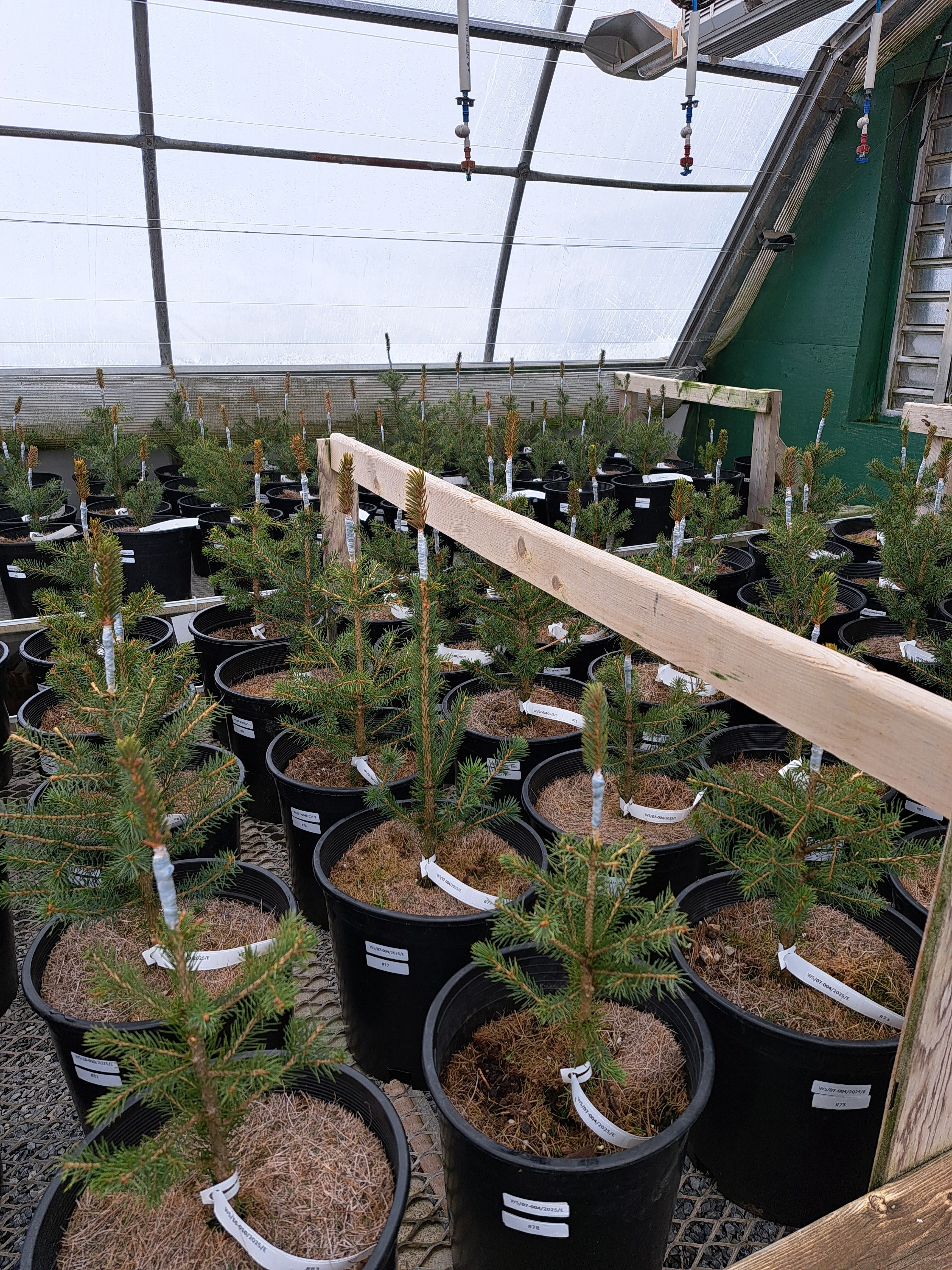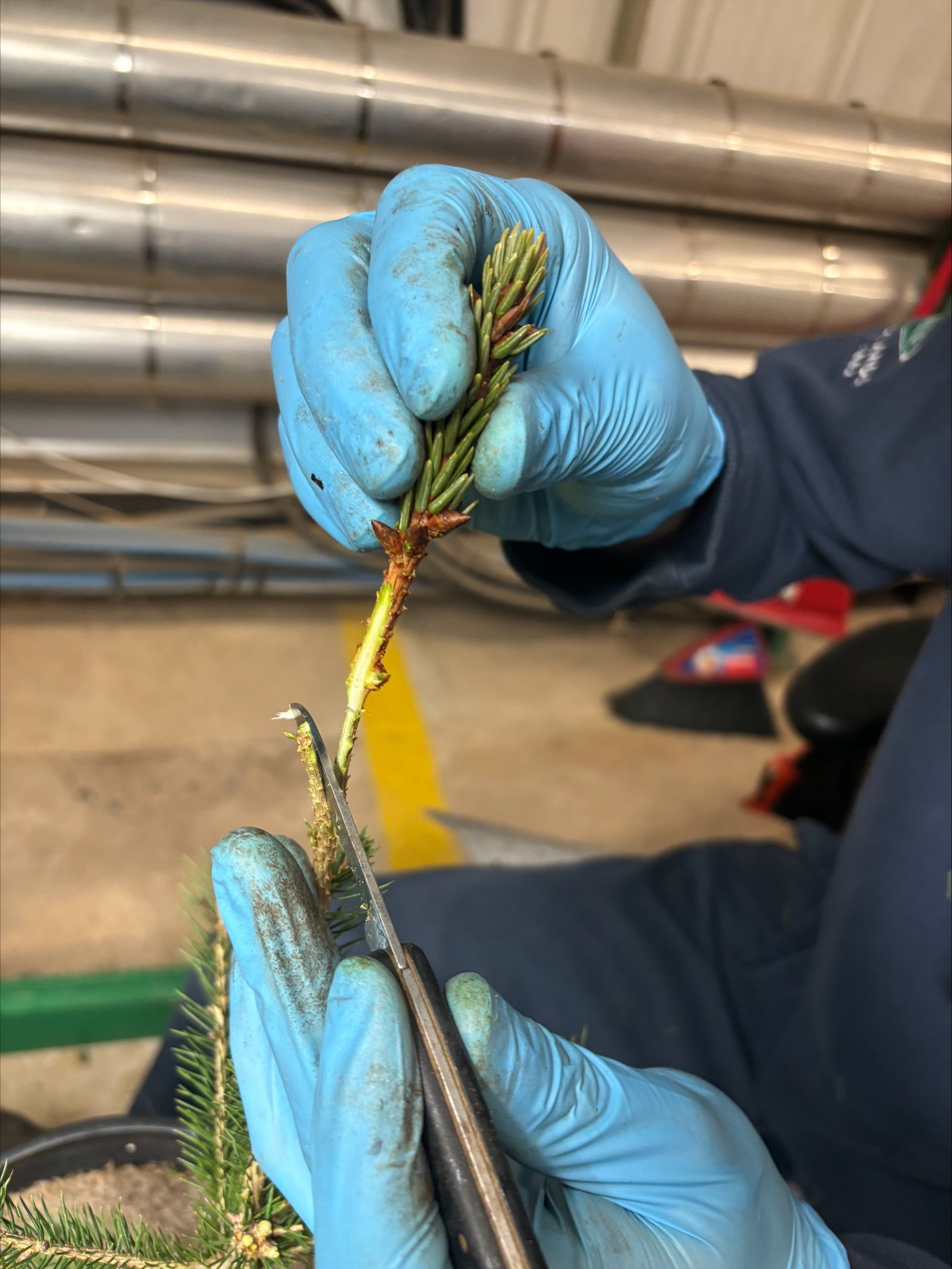Learn how Parkindale Seed Orchard creates stronger trees through tree grafting
At Parkindale Seed Orchard, employees use the traditional method of tree grafting to create stronger trees for the future forest.
The world-class seed orchard near Elgin, N.B. employs this technique to capture high-value traits like rapid growth, tree straightness and resiliency to pests and diseases and naturally replicate them on a large scale.
Grafting involves taking clippings from desired trees, known as scions, and attaching them to the base of another tree, or rootstock. This process produces exact copies of high-value trees in a reasonable timeframe and enables faster seed production.
The grafting program at Parkindale Seed Orchard typically takes six to eight weeks to complete with two to four people. The scions are collected from locations throughout New Brunswick and Nova Scotia. This must be done no sooner than two weeks of being grafted to ensure the highest survival results. Species-specific temperature requirements when storing the scions in freezers are also implemented to ensure optimal survival.
One interesting detail is that red, white and black spruce trees can be grafted onto white spruce trees with a high success rate, while white spruce trees do not graft well onto other species and display a lower success rate.
The end goal of the grafting process is to create an orchard large enough to meet future seed demand and to have high-value trees for future tree breeding. This ultimately contributes to the continuous cycle of harvest and renewal in a sustainable working forest.
By harnessing the power of tree grafting, Parkindale Seed Orchard is at the forefront of tree improvement, ensuring the continued sustainability and health of forest ecosystems for generations to come.

